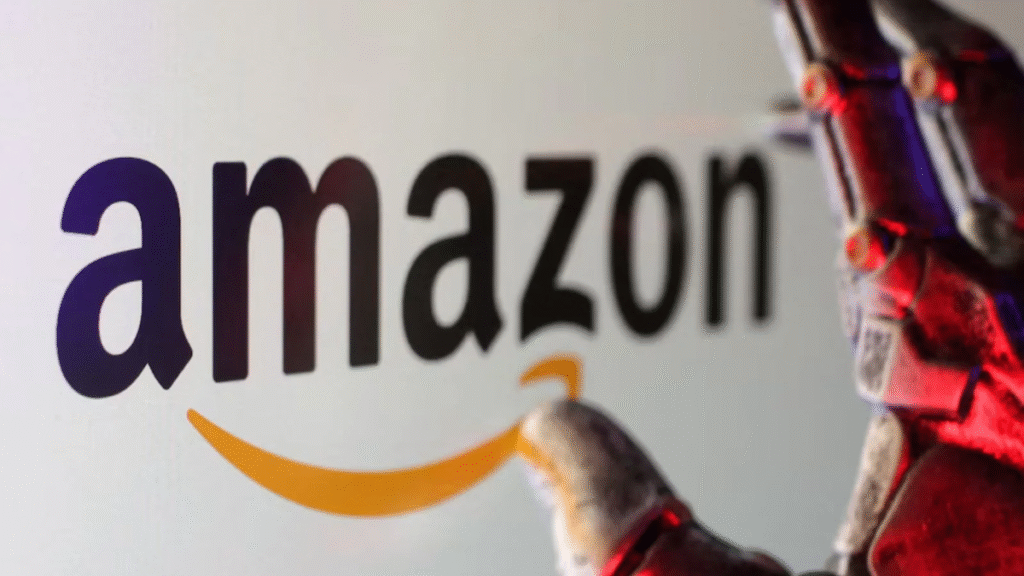Tech
iPhone 17e to Redefine Budget Innovation: Apple’s Next Affordable iPhone May Finally Get the Dynamic Island
Apple’s upcoming iPhone 17e could launch in early 2026 with a sleeker design, Dynamic Island, and upgraded display — making it the most affordable “premium-looking” iPhone yet.

Apple is preparing another shakeup for its budget iPhone lineup, and this time it’s not just about performance — it’s about style meeting affordability. According to leaks from Digital Chat Station (DCS), the iPhone 17e is expected to debut in March 2026 with a major design overhaul that could make it look more like the flagship models.
A New Era for Affordable iPhones
After years of keeping the notch on its lower-cost devices, Apple is reportedly planning to introduce the Dynamic Island — the pill-shaped, interactive display cutout that first appeared on the iPhone 14 Pro and iPhone 14 Pro Max.
This feature dynamically expands and contracts to show real-time activities, such as FaceTime calls, music playback, and notifications, offering users a more immersive experience. If this rumor proves true, the iPhone 17e will be the first “e” model to move away from the dated notch design — signaling a new design era even for Apple’s affordable line.

A tweet by @UniverseIce (a well-known leaker on X) echoed this, calling the move “Apple’s smartest upgrade for the everyday buyer.”
Display and Design Details
The iPhone 17e will reportedly retain a 6.1-inch OLED display, offering sharp contrast and vibrant colors. However, while the flagship iPhone 17 Pro series will likely continue to feature a 120Hz ProMotion display, the 17e will remain at a 60Hz refresh rate — a decision that helps Apple keep costs down.
Still, with the Dynamic Island and thinner bezels, the design should feel far more refined compared to the iPhone 16e, which launched earlier in 2024.
Design analyst Ross Young (LinkedIn) commented, “If Apple introduces the Dynamic Island to its budget lineup, it will blur the visual line between premium and entry-level — a strategic masterstroke.”
Powered by the A19 Chip
Performance-wise, Apple is rumored to equip the iPhone 17e with the A19 chip, the same generation used in its flagship siblings — though possibly with some cores tuned down to optimize power efficiency and price. This ensures the 17e remains fast enough for gaming, photo editing, and Apple Intelligence features like Siri upgrades and AI-driven photo organization.

If true, this could make the iPhone 17e one of the most capable “budget” smartphones on the market, rivaling mid-range Android devices from Samsung, OnePlus, and Google.
A Refreshed Budget Strategy
The “e” series has always aimed to give Apple fans a taste of premium performance at a lower price. But with the iPhone 17e, it seems Apple is finally addressing the one major complaint about its affordable phones — the old-fashioned design.
According to insiders, the model will also feature improved battery optimization, slightly thinner form factor, and better heat management, making it not only beautiful but reliable in the long run.
A senior tech analyst at Counterpoint Research told Daily Global Diary, “This could be the first time Apple’s budget phone lineup looks truly indistinguishable from its flagship siblings. It’s a psychological upgrade as much as a technical one.”
What Comes Next: iPhone 18 Pro’s Camera Revolution
While the iPhone 17e is gearing up for its early 2026 debut, leaks have also hinted at another game-changing feature in Apple’s future — a variable aperture camera on the iPhone 18 Pro.

This lens innovation, expected to arrive in September 2026, could make the Pro lineup a powerhouse for photographers and videographers, allowing greater control over lighting and depth — a feature long present in professional DSLR cameras.
If the rumors hold, Apple’s innovation roadmap looks as ambitious as ever, blending luxury design with mass-market accessibility.
The Bottom Line
The iPhone 17e may not have all the bells and whistles of the Pro models, but its rumored combination of Dynamic Island, OLED display, and A19 chip could make it one of Apple’s most balanced devices yet.
By closing the gap between affordability and elegance, Apple seems ready to redefine what “budget premium” really means.
Tech
Amazon Reportedly Set to Cut 30,000 Corporate Jobs as AI Reshapes Workforce
Nearly 10% of Amazon’s white-collar employees may lose their jobs as the tech giant leans further into artificial intelligence and automation.

A Major Shakeup in Amazon’s Corporate Workforce
Amazon is reportedly preparing to lay off as many as 30,000 corporate employees, marking one of the company’s largest rounds of job cuts to date. The layoffs, expected to begin tomorrow, could affect almost 10% of its corporate workforce, according to multiple reports.
Reuters first broke the news, while CNN and other outlets have reached out to Amazon for official confirmation. The company currently employs over 350,000 corporate staff, according to a 2024 filing with the US Equal Employment Opportunity Commission (EEOC).
The move reflects growing anxiety across the tech sector as artificial intelligence (AI) begins to transform white-collar work — reshaping industries once thought to be immune from automation.

AI and Efficiency: The New Reality for Tech Giants
The decision appears to align with comments made earlier this year by Amazon CEO Andy Jassy who wrote in a June 2024 blog post that AI-driven efficiency would eventually reduce the company’s reliance on human labor.
“Advancements in AI will allow us to achieve efficiencies across teams and operations, enabling us to do more with less,” Jassy said.
While Amazon has long embraced automation in its warehouses — deploying robots and machine learning systems to streamline logistics — the new cuts reportedly target corporate divisions, including marketing, operations, and finance.
Industry analysts say this shift signals a broader trend: as generative AI tools become more capable, large firms are re-evaluating human roles that overlap with automation.
Amazon’s Layoff History
This is not the first time Amazon has made deep cuts. In 2023, the company laid off 27,000 employees across divisions like Amazon Stores, Amazon Web Services (AWS), and Human Resources.
At the time, Jassy attributed the cuts to a worsening global economy and a post-pandemic correction in corporate hiring.
“After rapid expansion during the pandemic, Amazon has been forced to scale back and refocus on profitability,” explained Dan Ives, tech analyst at Wedbush Securities (LinkedIn).
However, unlike past rounds focused on logistics and retail operations, the latest layoffs appear to be targeting white-collar roles — particularly those that overlap with AI-driven automation.
The Bigger Picture: AI and the Job Market
The timing of the layoffs coincides with a broader wave of restructuring across the tech industry. In the past year alone, Google, Microsoft, Meta, and IBM have all reduced staff while investing heavily in AI.
While AI has boosted productivity and reduced costs, it has also fueled fears of job displacement — especially among young professionals and mid-level managers.
According to US Labor Department data, job openings in tech fell by 12% in the last quarter of 2024, while AI-related roles saw a 40% increase.
“The transition to AI-based systems is not just changing how companies operate — it’s redefining the very nature of employment,” said Dr. Erik Brynjolfsson, Director of the Stanford Digital Economy Lab.
Still, many AI researchers argue that the fears of widespread white-collar unemployment may be overstated. They believe automation will create new categories of jobs rather than simply replacing existing ones.
A Warning for the US Labor Market
Economists warn that Amazon’s layoffs could be a bellwether for the broader US labor market. The cuts come amid early signs of economic slowdown, with several indicators — such as reduced hiring and lower job openings — hinting at softening conditions.
“This is an inflection point for the tech workforce,” said Claudia Goldin, Nobel-winning economist and Harvard professor. “What we’re seeing is not a collapse, but a recalibration — where technology is forcing a new definition of productivity.”
If the 30,000 layoffs proceed, analysts expect ripple effects across Seattle, New York, London, and Bangalore, where Amazon maintains major corporate offices.

Amazon’s Future: AI as the Core Strategy
As Amazon Web Services (AWS) continues to dominate the cloud computing market and expand its AI infrastructure, insiders suggest the company’s long-term vision revolves around full-scale automation — from logistics to customer service and administrative management.
The company has already integrated Generative AI tools into its Alexa voice assistant, product recommendations, and AWS AI services, signaling an accelerating pivot toward a digital-first operation.
In a recent investor briefing, Jassy reiterated Amazon’s commitment to “reshaping how AI serves customers and optimizes internal systems,” describing the technology as “transformative at every level of business.”
Human Cost vs. Technological Progress
While investors may welcome the efficiency-driven cost cuts, critics argue that the move underscores a growing disconnect between profitability and human employment.
“For Amazon, AI may be a cost-saver. But for thousands of workers, it’s a livelihood disruptor,” noted Sara Nelson, President of the Association of Flight Attendants-CWA, who has been outspoken about the broader impacts of automation on labor rights.
As tech firms chase automation, the question remains: Will AI truly empower workers — or simply replace them?
Tech
183 Million Email Passwords Leaked Online: Is Your Gmail Account Safe from the Latest Data Breach?
A shocking 3.5TB data leak has exposed over 183 million email passwords — including many linked to Gmail accounts. Here’s what experts say, how it happened, and the urgent steps you must take to protect your data.

A Massive Data Breach Shakes Email Security
A new cybersecurity nightmare has emerged as more than 183 million email passwords were leaked in what experts are calling one of the largest credential exposures in recent years. The breach, reportedly spanning 3.5 terabytes of stolen data, has raised alarm bells among users of popular email platforms — especially Google’s Gmail.
The shocking discovery was brought to light by Troy Hunt, an Australian security researcher and founder of the renowned breach-notification website Have I Been Pwned. According to Hunt, the dataset includes 183 million unique accounts, with 16.4 million new addresses that had never appeared in any previous breaches.
How the Breach Was Discovered
In a detailed post, Hunt revealed that the stolen credentials were compiled from “Stealer logs” — malicious files generated by infostealer malware that quietly harvests sensitive information from infected devices.
“Someone logging into Gmail, for example, ends up with their email address and password captured against gmail.com,” Hunt explained, noting that three pieces of data are typically stolen — the website address, the email address, and the password.
Such malware often spreads through phishing emails, fake browser extensions, or cracked software downloads, making unsuspecting users easy targets.

Was Gmail Actually Hacked?
Despite widespread panic online, Google clarified that its systems were not directly breached.
In an official statement, a Google spokesperson told the New York Post,
“Reports of a Gmail security ‘breach’ impacting millions of users are entirely inaccurate and incorrect.”
The company emphasized that the leak was not due to a hack on Gmail’s servers but rather the result of cybercriminals collecting stolen credentials from various unrelated breaches using infostealer tools.
“We encourage users to follow best practices to protect themselves from credential theft, such as turning on 2-step verification and adopting passkeys as a safer alternative to passwords,” the spokesperson added.
You can learn more about Google’s security measures via Google’s official security blog.
How to Check If Your Data Was Exposed
If you’re concerned that your credentials might have been part of this massive leak, visit HaveIBeenPwned.com. The site allows users to safely enter their email addresses and see if they appear in any known breaches — including this latest one.
Upon checking, if your email is flagged as compromised, it’s crucial to take immediate action:
- Change your password right away.
- Enable two-factor authentication (2FA) on your Gmail and other accounts.
- Avoid reusing the same password across different platforms.
- Consider adopting passkeys — a more secure, phishing-resistant alternative supported by Google.
As Troy Hunt wrote,
“If you’re one of the 183 million people affected, you need to change your email password immediately and enable two-factor authentication if you haven’t already.”
Why These Leaks Keep Happening
Cyber experts point out that large data leaks often stem from recycled passwords and phishing scams. Once a user’s credentials are stolen from one site, hackers test the same combination across other platforms — a technique known as credential stuffing.
“People often underestimate how valuable even a single compromised password can be,” noted Rachel Tobac, a cybersecurity expert and CEO of SocialProof Security (LinkedIn).
“Once stolen, these details can be traded, sold, and reused indefinitely unless users take proactive steps.”

How to Protect Yourself from Future Breaches
To keep your online identity safe, experts recommend a few simple but effective habits:
- Use a password manager to generate and store strong, unique passwords.
- Avoid clicking on suspicious links or attachments in emails.
- Regularly monitor your accounts for suspicious activity.
- Keep your operating system and antivirus software updated.
- Adopt passkeys or hardware security keys like YubiKey, now supported by Google and Microsoft.
The Bigger Picture
This breach is a stark reminder that in the digital age, data security is everyone’s responsibility. While tech giants like Apple, Google, and Microsoft continuously upgrade their defenses, the weakest link often remains human behavior — weak passwords, reused credentials, and lack of 2FA.
With 183 million credentials now floating on the dark web, users must act swiftly to secure their data. As Hunt summed up:
“Treat every password as if it’s already been exposed — because chances are, it has been.”
Tech
From Mumbai’s Middle Class to AI Startup Success: Dhravya Shah Raises $2.6 Million for Supermemory
Mumbai Teen Who Gave Up IIT Dream to Study in the US Secures $2.6 Million in Seed Funding for AI Startup Supermemory

At just 19 years old, Dhravya Shah, a self-taught entrepreneur from a “middle-class” family in Mumbai, has made an impressive mark in the world of artificial intelligence. Shah has successfully raised $2.6 million in seed funding for his AI startup, Supermemory, which focuses on enhancing long-term memory capabilities in AI models.
The funding round includes prominent investors from leading tech companies, such as Google AI chief Jeff Dean, DeepMind product manager Logan Kilpatrick, and executives from OpenAI, Meta, and Google. This shows the massive potential and trust placed in Shah’s innovative AI solution, which has already captured the attention of top figures in the AI industry.

Who is Dhravya Shah?
Dhravya Shah is a prime example of a young entrepreneur who defied the traditional educational path to pursue his passion. Originally preparing for the highly competitive IIT entrance exams, Shah took a different route after selling one of his early projects—a bot that turned tweets into attractive screenshots. The bot was sold to Hypefury, a social media tool, which allowed Shah to use the proceeds to relocate to the United States and study at Arizona State University (ASU).
However, Shah eventually dropped out of ASU to follow his true calling—building his startup, Supermemory. “Being in a middle-class family in Mumbai, my parents were hesitant at first, but they eventually got me a laptop,” Shah shared in a YouTube video about his early struggles. Using that laptop, Shah taught himself to code, a skill that laid the foundation for his future success.

Currently, Shah is in the US on an O-1 visa, which allows individuals with extraordinary ability or achievement in their field to work and live in the country. This visa status reflects his growing recognition in the field of technology and artificial intelligence.
What is Supermemory?
Supermemory started as an experiment in Shah’s journey to build something new every week. During one of those weeks, he created an early version of the tool, initially called Any Context, which was a simple solution that allowed users to chat with their Twitter bookmarks. Over time, Shah refined the tool, and it evolved into Supermemory—a much more advanced AI platform designed to extract “memories” or insights from unstructured data like documents, chats, emails, and other content.
In simple terms, Supermemory enables AI applications to remember what they have learned and use that knowledge later, making interactions with AI much more human-like. This system provides a deeper understanding of context in AI apps, making it applicable for a wide range of uses—from email clients to AI-powered video editors.
As Shah explains, “Our core strength is to extract insights from any kind of unstructured data and give the apps more context about users.” This makes Supermemory particularly valuable for businesses looking to enhance user experience by offering personalized, intelligent solutions across various industries.
The Future of Supermemory
The $2.6 million seed funding round has already placed Supermemory on the radar of some of the biggest players in the tech world. Investors like Susa Ventures, Browder Capital, and SF1.vc have supported the startup’s vision, while individual investors such as Cloudflare’s Knecht, Google AI’s Jeff Dean, and DeepMind’s Logan Kilpatrick continue to back its growth.
Supermemory’s client list is already impressive, with companies like Cluely, AI-powered video editor Montra, and real estate startup Rets already benefiting from its technology. With such a strong foundation and backing from major investors, Shah’s AI startup looks poised for tremendous growth.
-

 Entertainment6 days ago
Entertainment6 days agoRobert De Niro slams ‘King Donald I’ and calls Americans to rise again — says ‘we can’t let up’ against Trump’s bullying tactics
-

 Entertainment3 days ago
Entertainment3 days agoFans Can’t Believe Susan Boyle’s Stunning New Look… “She’s Unrecognizable!”
-

 Politics4 days ago
Politics4 days agoWhy Donald Trump Suddenly Ended All Trade Talks With Canada — And the Unexpected Role of Ronald Reagan
-

 Sports7 days ago
Sports7 days ago“Chasing more than a conference crown… Purdue Boilermakers set sights on national glory after historic preseason No. 1 nod”
-

 Sports7 days ago
Sports7 days agoHistory made! Purdue Boilermakers grab first-ever No. 1 spot in USA TODAY Sports preseason men’s basketball poll — can they finally win it all?
-

 Entertainment6 days ago
Entertainment6 days agoDonald Trump fumes as Bad Bunny becomes first-ever Spanish-only Super Bowl headliner — NFL says decision was ‘carefully thought through’
-

 Politics7 days ago
Politics7 days agoPoll shocker: Donald Trump’s approval rating climbs as Americans surprisingly back a Palestinian state
-

 Politics4 days ago
Politics4 days agoCharlotte Train Horror: Why a Ukrainian Refugee’s Killing Has Sparked a Death Penalty Case That’s Shaking America




























